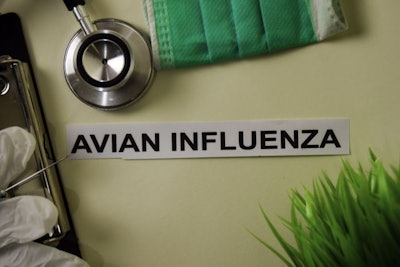
The presence of a highly pathogenic avian influenza (HPAI) virus has been confirmed at a farm in the east of South Korea. This is the nation’s first outbreak of the 2022-2023 season. Furthermore, these are the first cases on a farm in the country since early April.
Affected was a flock of around 9,500 ducks in Yecheon, a county in North Gyeongsang province. According to the official report to the World Organisation for Animal Health (WOAH), 11 of the birds had shown symptoms of the disease, and the whole flock has been culled.
The serotype of the virus involved has been identified as H5N1, which is the same group that has been detected this season in Europe, and was circulating in South Korea during the 2021-2022 HPAI season.
Based on WOAH notifications, this latest case brings South Korea’s confirmed outbreaks in commercial poultry since November of 2021 to 47. Directly impacted have been 4.99 million poultry through mortality or culling.
High-level poultry culling order
Earlier this week, Prime Minister Han Duck-soo instructed officials to carry out a number of measures to control HPAI.
Among these is the culling of all poultry within 500 meters of an outbreak, reported the Yonhap news agency.
Furthermore, he called for disease containment measures to be implemented around affected premises. Among these was disinfection around the infected duck farm in Yecheon, and restrictions on movements in the area.
Wild bird cases also drive rise in HPAI alert level
Just a few days prior to the outbreak on the farm, a wild duck caught in South Chungcheong tested positive for HPAI virus with the same serotype.
As a result, the agriculture ministry raised the alert level for this disease from “caution” to “severe.” At the same time, the ministry ordered increased inspections of poultry farms across the country. Authorities were also urging poultry owners and workers to raise biosecurity measures on farms.
Within the past week, further signs of the HPAI virus have been detected at three other locations in the country. Like South Chungcheong, the infections have also been located in the west of the country — from Gyeonggi and Incheon City in the north, to the province of North Jeolla.
With the wide distribution of these cases in South Korea — and likely aware of the devastating start to the new HPAI season in western Europe and elsewhere in the North Hemisphere — the agriculture ministry promptly announced increased and widespread disease control measures.
Now implemented are more frequent inspections of poultry farms and slaughterhouses, while disinfection outside these premises must be carried out more frequently. Owners are being urged to report any signs of ill-health or increased mortality in their birds, and take extra care with cleaning and disinfection. All entries to each farm must now have a disinfectant dip for vehicles, and double-disinfection has been ordered for all farm vehicles.
There are also to be more controls at traditional markets, with a closure one day a week to allow for thorough sanitation. Health checks on birds at these markets are widened to include all poultry, including ducks, hens, and broilers.
Last but not least, wildlife sanctuaries and similar areas are now closed to visitors. This aims to reduce the risk of spreading HPAI from the wild population to domestic birds.
Already in September, South Korean authorities issued warnings about the threat of HPAI. At the same time, market analysts attributed a dip in national chicken production in the first six months of this year to the previous year’s HPAI outbreak wave.
HPAI situation elsewhere in Asia
No further outbreaks have occurred in the Philippines over the past month, based on reports from the official Philippines News Agency (PNA). According to this source, the most recent cases were at a farm with more than 80,000 chickens in southwestern Mindanao.
View our continuing coverage of the global avian influenza situation.

















